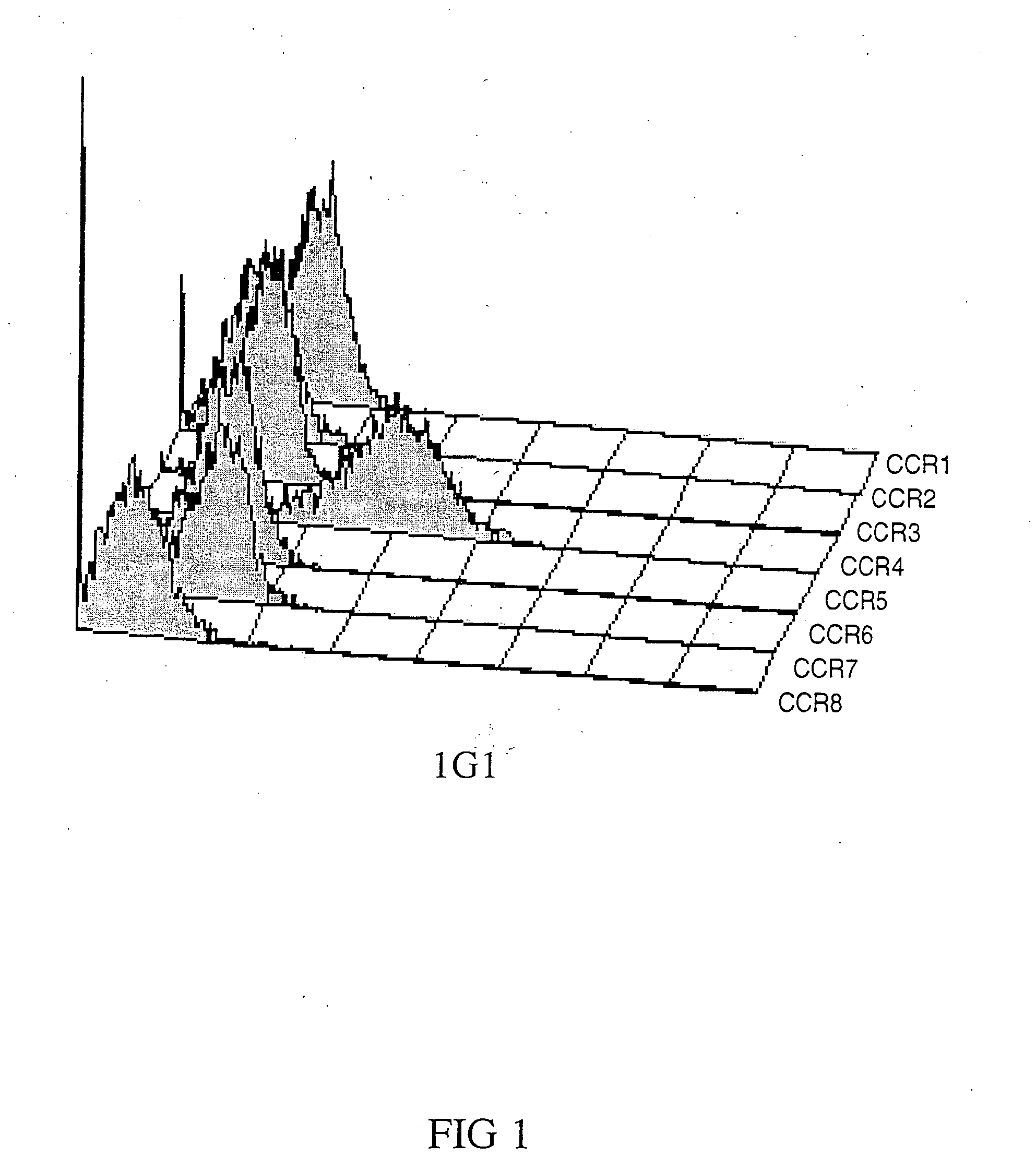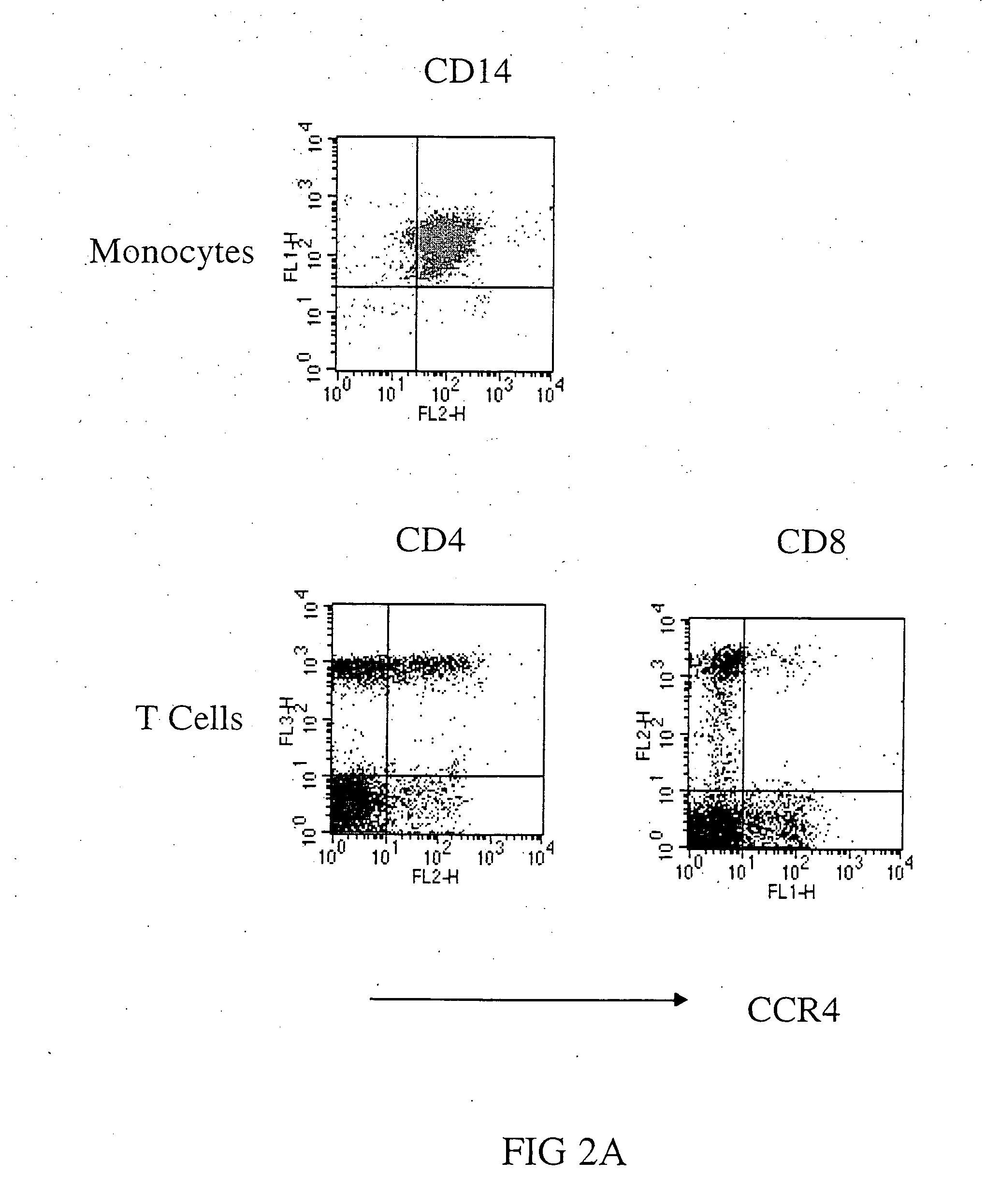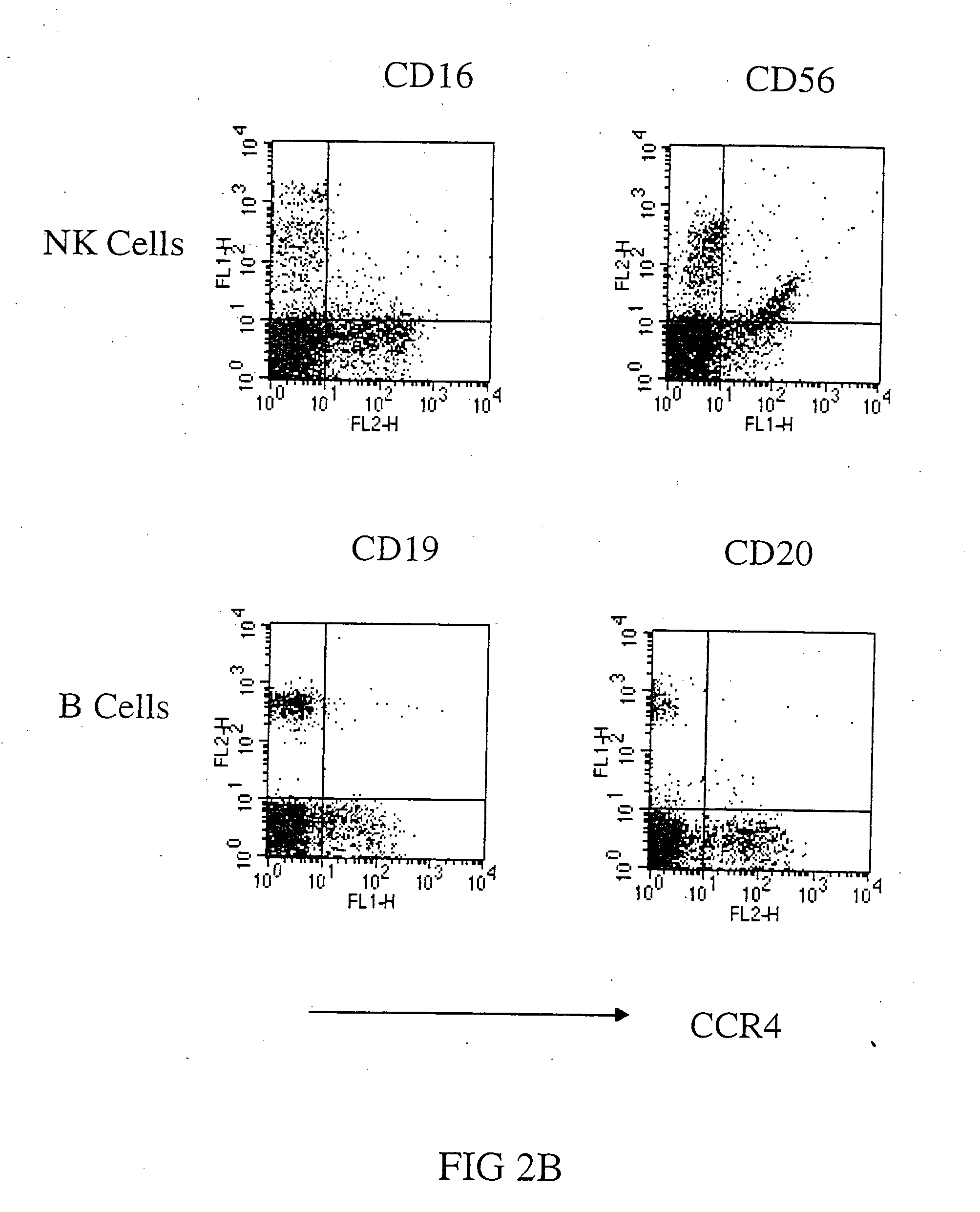Anti-CCR4 antibodies and methods of use therefor
a technology of anti-ccr4 and antibodies, which is applied in the field of anti-ccr4 antibodies, can solve the problems of determining the relevance of disease initiation and progression, and elucidating the normal immune function of a specific receptor on a given cell typ
- Summary
- Abstract
- Description
- Claims
- Application Information
AI Technical Summary
Benefits of technology
Problems solved by technology
Method used
Image
Examples
examples
Materials and Methods
Construction of CCR4 Stable Transfectants
[0112] CCR4 cDNA was obtained by PCR using a 5′-oligonucleotide primer (5′-CCAACCAAGCTTATGAACCCCACGGATATAGCAG-3′; SEQ ID NO: 1) and 3′-oligonucleotide primer (5′-CCAACCTCTAGATTAGAGCATCATGGAGATCATGATCC-3′; SEQ ID NO: 2) which contained flanking HindIII and XbaI sites, respectively. The PCR fragment was subcloned into the Hindifi and XbaI sites of pMRB 101, in which the inserted gene was driven by a CMV promoter. The DNA was stablely transfected into a murine pre-B lymphoma cell line (L1.2 or L1 / 2) as described (Ponath et al., J. Exp. Med. 183:2437 (1996); Wu et al., J. Biol. Chem. 271:31202 (1996); Wu et al., Nature 384:179 (1996)). The cells that expressed high levels of CCR4 were selected by serial dilution / subcloning for their ability to chemotax to TARC and MDC. For monoclonal antibody production, the cells were treated with 5 mM butyric acid for 16-18 hours and used for immunizing mice.
Cells and Cell Lines
[0113...
PUM
 Login to View More
Login to View More Abstract
Description
Claims
Application Information
 Login to View More
Login to View More - R&D
- Intellectual Property
- Life Sciences
- Materials
- Tech Scout
- Unparalleled Data Quality
- Higher Quality Content
- 60% Fewer Hallucinations
Browse by: Latest US Patents, China's latest patents, Technical Efficacy Thesaurus, Application Domain, Technology Topic, Popular Technical Reports.
© 2025 PatSnap. All rights reserved.Legal|Privacy policy|Modern Slavery Act Transparency Statement|Sitemap|About US| Contact US: help@patsnap.com



